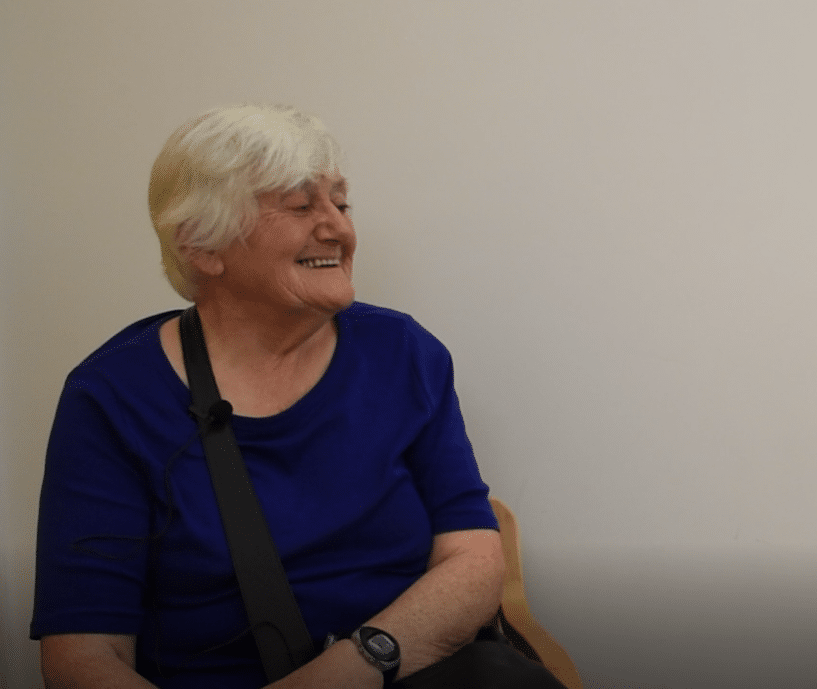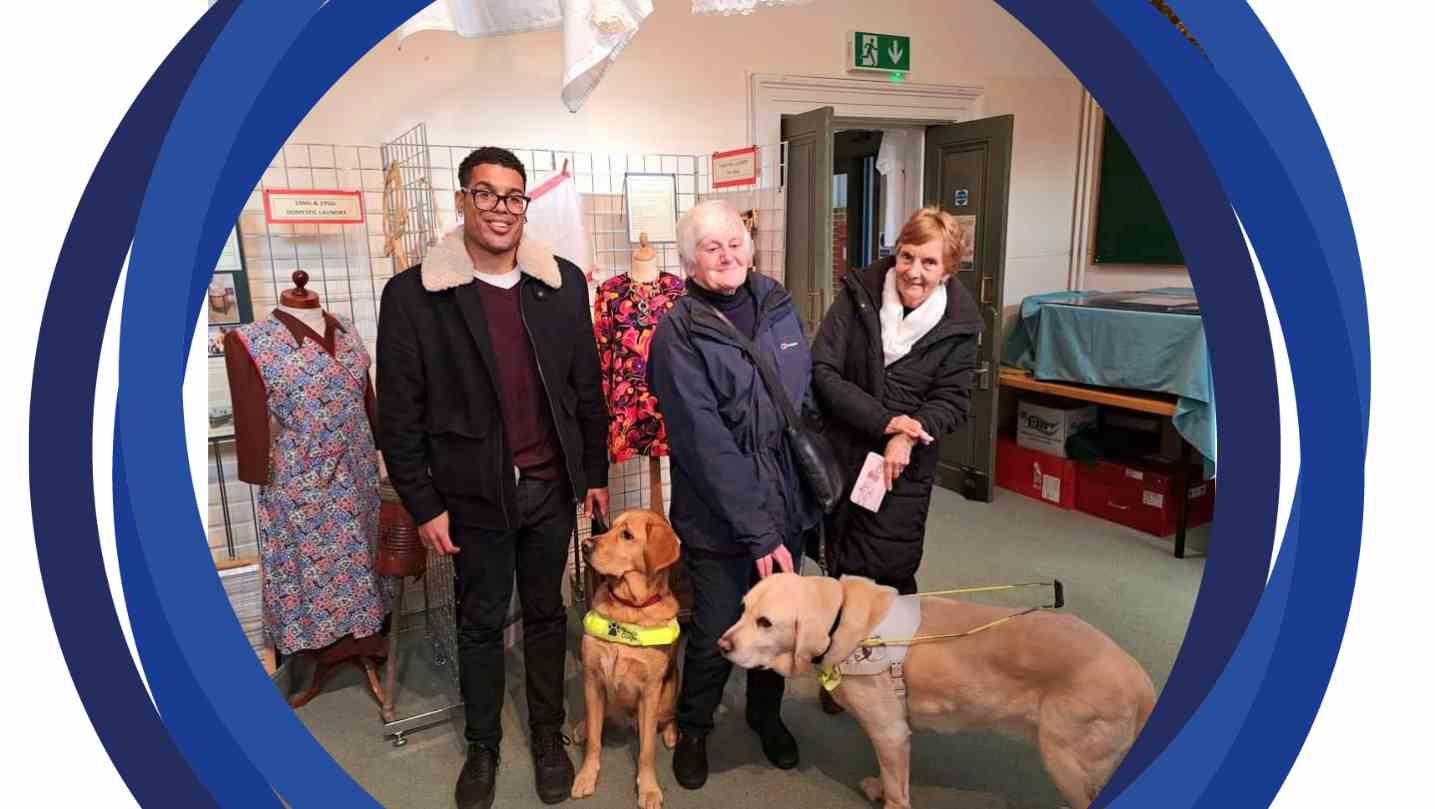Mary has a severe form of Myopia which was picked up early due to a family history of the disease.
Mary spent her early to mid-teens frequently attending the Oxford Eye Hospital. Her sight deteriorated during this time but eventually settled down, so she was discharged with very thick glasses. Mary went on to become a nurse and midwife, a job she held until her late forties when her eyesight issues returned.
“Things were changing, and I thought it was my imagination at first but then I couldn’t see print. Eventually the optician sent me to the Oxford Eye Hospital, and they said I have degenerative myopia.”
“I had driven but I had to give that up. It is quite a big one, but I told myself that I was in my about mid 50s then. I thought if this was happening to you when you were 18, you would think it was another nail in the coffin. It would have a bigger devastating effect, but I thought I was young enough to adapt and get on with it.”
One of the biggest issues for Mary was that she lived in a small village near Brill which had no public transport, and very few pavements, so in 2000 she moved to Thame.
“It’s a lot more connected with busses, trains, taxi services etc, and it’s a very lively town. Many small towns are dying but Thame survives so that was an excellent move.”
In the early 2000s Mary had cataracts removed but unfortunately it didn’t have much of an effect on her vision because of the deterioration in the back of her retina. Mary also has glaucoma; her certification officially says, ‘Degenerative Myopia, Glaucoma, and Geographic Macular Atrophy.’
“It’s been a gradual thing, but you learn to adapt. Along that path I would say, although there is gradual deterioration, there were stages. There’s a step down; you can cope with it and then suddenly you can’t cope with it anymore,” said Mary.
“You have to re-adapt each time you’ve had a change.”
“I have electronic magnifiers I could use to pick out some instructions, but that’s not working for me anymore,” said Mary.
Mary first found out about MyVision via the Sensory Impairment Team in the early 2000s when she was registered visually impaired. Mary said, “I was invited into MyVision for a session with a group of other people telling me what was available out there to assist which I found very informative and very helpful.”
Some of the other resources that Mary utilises are the BT #195 directory enquiries and Calibri Books.
“It made me appreciate that [MyVision] is here with all those little things to help you on your journey.”
Mary’s hobbies have changed over the course of her sight loss journey.
“Giving up driving, that was a biggie. I then bought a tandem and had a go with that. I used to ride around on the back of a tandem with [her husband] Roger. As a cyclist you automatically try to retain your balance. If it’s swerving one way, your automatic reaction is to try and bring it back, but with a tandem you have to give up some of that control. It’s also handy for the person in front to say ‘I’m just about to turn,’ because if they don’t, you get a shock.” “Then Roger would end up in the nettles and I would be sitting there saying ‘what’s happening?’ ‘What happened there?’ It is a bit scarier on the road, so I don’t do it now.”
“I used to go canoeing. I used to have a good group I would go to on Thursday evenings. At that stage I had a guide dog, Ollie who would come with us too and that was great fun,” said Mary.

Mary told us that her guide dog means a huge amount to her. Before they were partnered Mary was hesitant to go out by herself. As her eyesight gradually declined, she was increasingly afraid of bumping into others.
One moment that had a big effect on Mary was when she was in a supermarket and bumped into an elderly person who then groaned out in pain. “I apologised and walked straight home, rang the sensory impairment team and said, ‘I need help.’”
Mary said, “afterwards, someone from the VI Team came along and I told them what I was looking for. They came out with the mobility training, and that was another boost in confidence. I got white cane training which I thought was brilliant.”
“Then I was asked if I ever thought of a guide dog, and I was set off down that path. So once again, when you stumble down your path and think, ‘I’m not coping here,’ they are there to help pick you up and set you off in the right direction.”
“The white cane training was good, but a guide dog is in a league of its own. It’s not for everyone but for me it’s been fantastic and works really well.”
Mary’s advice to other people who are visually impaired is, “I think it can be challenging, very frustrating and isolating, but the consolation is there are a lot of people that have walked down that path before and there are a lot of organisations to help you through that journey. MyVision helped me and continues to help me.”


